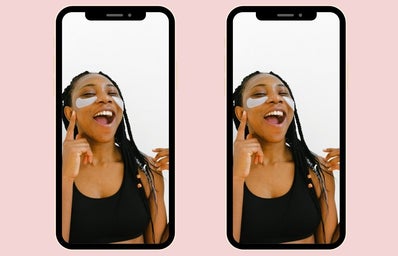The skin is our largest organ and it is the only organ that is directly exposed to pollution, sun damage and other external risk factors. I don’t think it’s necessarily vain or superficial to want to take good care of your skin. If anything, I see skin care as an important part of self-care.
Everybody should be practicing skin care as they take care of the rest of their body and mind, especially since information on it is so easily accessible nowadays. There is an abundance of information on skincare and how to take proper care of your skin type on the internet. However, that information is often provided for and catered to a white audience as most of the Western beauty industry is. In the past, I have made some mistakes that might have been right for white skin but were damaging for my skin of colour. I’m writing this article now to be that someone to you that I wish I had back then.
Here is my list of 4 skin care mistakes I wish I avoided for skin of colour:
- Sunscreen
-
1. Using the wrong mineral sunscreen
Mineral or physical sunscreens protect you with literal minerals, like zinc oxide and titanium dioxide, that are ground up. These offer you a much broader and better protection from the sun and are less damaging to the environment than chemical sunscreens. That sounds great, so why would I ever buy chemical sunscreen you might ask? The downside of mineral sunscreens are that most of the ones you find in-store leave a white cast. I was really excited to use my first mineral sunscreen because I had found one that was also supposed to be light and mattifying which is hard to find in sunscreens as they rather rarely cater to oily or acne-prone skin. Long story short, as I was running late that morning I realised my new mineral sunscreen made me look like an ashier, messier and Asian version of Casper the ghost. On top of that, it was water-proof too, so all the scrubbing I could do barely fixed anything. I had to ride my bike through the city looking like I was on my way to a haunted house and not uni. Mineral sunscreen? Yes, but ALWAYS check if it leaves a white cast.
2. NOT using sunscreen
Growing up around white people who would often get sunburns in summer I thought for most of my life that I didn’t have to use sunscreen because I never get sunburns. I don’t know if that’s logical and it certainly doesn’t make sense to me now, but I found out a lot of people of colour have this misconception. Let me tell you once and for all, you have to wear sunscreen everyday, no matter your complexion or melanin level. The sun’s UV rays do irreversible damage to your skin everyday. Not only can it trigger skin cancer, but also premature aging, wrinkles and irritation. Yes, your melanin will protect you from the sun, but your skin can only take on so much until it shows damage.
- Chemical and physical damage
-
3. Overexfoliating with AHA
Alpha-Hydroxy-Acid (includes glycolic acid and citric acid) is a skincare ingredient that has been gaining a lot of popularity in the world of skincare lately. A good reason it is used in skincare for its gentle but effective exfoliating benefits. The first and only AHA product I used was The Ordinary’s ‘AHA 30% + BHA 2% peeling mask’ that went viral for its blood red appearance. The Ordinary AHA + BHA solution is recommended everywhere as THE chemical exfoliator to get rid of dead skin cells and clogged pores (something my oily skin was in dire need for). However, for skin of colour, AHA could be overly exfoliating and a leading cause for hyperpigmentation (dark spots forming on your skin or uneven skin tone). When I used it the first time, the sensations I felt on my skin went beyond the expected tingle to an unendurable burn. I washed it off after 5 minutes but my skin was still itchy and red for the rest of the evening. That can’t be right, I thought to myself. So I went on the internet to see if others had similar experiences and soon found out that AHA, high concentrations can cause microburns which can be especially damaging to skin of colour. These burns can trigger an excessive release of melanin which in turn can create dark spots or hyperpigmentation.
4. Picking pimples
I have made many mistakes in my skin care journey but there is one I always knew not to do and it is picking my pimples. There was only one time when I couldn’t stop myself from popping this huge and painful pimple on my nose, so I went ahead and did it but with detrimental consequences. Naturally, the pimple got more inflamed and when it was finally gone, it left a dark scar on my nose that was visible for at least half a year. Never EVER do that but especially not if you have skin of colour. Picking and popping pimples can trigger your melanin to overproduce as it tries to heal the inflammation you inflicted and in turn causes hyperpigmentation. So even if it seems almost too easy to pop a pimple that already shows a whitehead when you’re about to go out with your friends or on a date, you will probably be better off not touching it at all and let your body do the healing.



